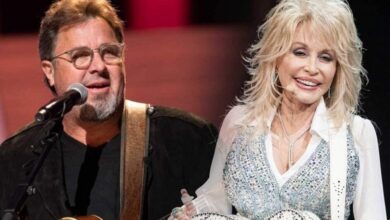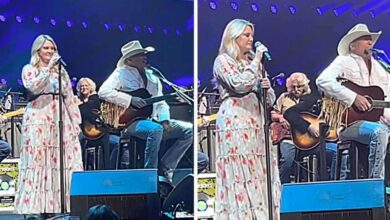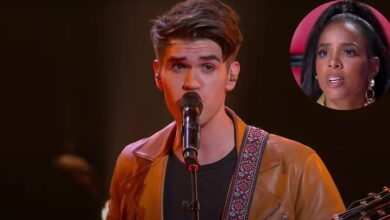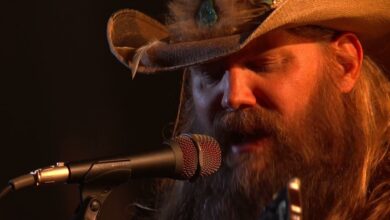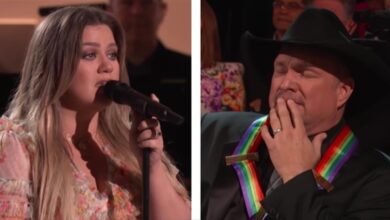This Popular Dance From The 1950s, Do You Remember It Now
In February 1958, a captivating dance craze erupted across American high school gyms and sock hops, encapsulating the joyous essence of the era and mirroring the carefree spirit characteristic of the early days of rock ‘n’ roll. This particular dance, known as “The Stroll,” quickly became emblematic of youthful exuberance and social engagement. Originating within African American communities, The Stroll gained significant traction through television, notably on the popular program “American Bandstand” hosted by Dick Clark. This platform allowed teenagers from various backgrounds and regions to witness and adopt the dance during their local gatherings. Thus, The Stroll transcended its origins to become a shared cultural experience that offered a glimpse into the evolving landscape of youth interaction across mid-20th-century America.
The Stroll is distinguished by its uncomplicated yet engaging structure, which promotes improvisation and individual expression while maintaining a collective experience. Dancers formed two lines facing one another, creating a vibrant social scene where couples alternated stepping into the aisle between the lines. As they progressed down the center, they added personal flourishes that provided a canvas for creativity, allowing participants to showcase their unique styles within the dance’s communal framework. This format not only facilitated self-expression but also symbolized the burgeoning sense of independence among young people, who sought to carve out their identities in a burgeoning youth culture that moved away from the constraints of previous generations.
The Stroll’s rise to prominence was closely tied to the burgeoning popularity of rock ‘n’ roll music, which was characterized by its catchy rhythms and upbeat melodies. The song “The Stroll,” performed by the Canadian vocal group The Diamonds, played a pivotal role in anchoring the dance within popular culture. The Diamonds, celebrated for their smooth harmonies and infectious doo-wop sound, produced a rendition that resonated deeply with audiences eager for fresh musical experiences. The vivid energy of the song complemented the lively movements of The Stroll, creating a synergistic relationship that set the backdrop for countless social events throughout the late 1950s.
Dave Somerville, the lead singer of The Diamonds, emerged as an iconic figure during this cultural moment. His rich, captivating baritone voice led the way, crafting memorable melodies that not only entertained but also inspired teenagers to take to the dance floor. Somerville’s charismatic presentation captured the carefree essence of the era, echoing the desires of a generation seeking to express their newfound freedoms. As teenagers throughout the nation learned The Stroll and sang along to the vibrant lyrics, Somerville and The Diamonds etched their names into the cultural tapestry of the decade, marking a pivotal chapter in music history where rhythm and harmony provided avenues for self-discovery and connection.
With its rapid ascent to fame, The Stroll became a beloved staple at social events, from school dances to local community gatherings. The dance’s universal appeal transcended race and social class, uniting youths during a time marked by significant societal divides. Its accessible nature allowed virtually anyone to pick up the steps in a short amount of time, making it a favorite among teenagers eager to engage with the latest trends. Simultaneously, the dance embodied a cool factor that drew youth in, symbolizing a moment when young people passionately asserted their identities through music and movement. As teens flocked to dance floors adorned in their finest outfits, they seized the moment to express confidence and celebrate the optimism prevalent in post-war America.
Moreover, The Stroll reflected deeper societal currents, serving as a harbinger of changes occurring within American society. Amid the escalating civil rights movements of the 1950s, dance spaces provided a rare environment for young people from different backgrounds to engage and connect with one another. Through the rhythm of The Stroll, teenagers exchanged not only dance steps but also camaraderie and shared joy, demonstrating a cultural desire for connection and unity amidst the racial tensions of the era. The dance became a microcosm of the broader societal evolution taking place, illustrating how youth carved out spaces for expression and joy despite the pressure of societal norms.
The Stroll’s impact extended beyond its immediate popularity, as its influence permeated various aspects of American pop culture. Its regular presence on television and in music programs helped cement its status within the collective memory of the time, ensuring its place in the heart of American youth culture. What began as a dance phenomenon catered to teenagers also attracted the attention of adults, who delighted in watching their children engage in such energetic and wholesome revelry. This intergenerational admiration highlighted a growing cultural appreciation for youth expression and leisure, further solidifying The Stroll’s status as a cultural artifact of youthful exuberance.
Even decades later, the echoes of The Stroll can still be observed in contemporary dance trends, demonstrating its lasting influence on social dancing. Various modern dance forms incorporate elements of The Stroll, showcasing the dance’s enduring legacy as a format for fun group participation and creative expression. At parties and social events today, the spirit of The Stroll persists, where people gather to share in the joys of music, movement, and togetherness, reflecting the timeless nature of communal dance.
In analyzing the cultural significance of The Stroll, one can discern that it represents more than just a fleeting trend; it embodies a crucial moment in American history when music, dance, and youthful expression coalesced. Capturing the essence of an era marked by introspection and transformation, The Stroll serves as a powerful reminder of how music and movement transcend societal barriers and foster connections among diverse groups. Whether showcased in polished televised performances or spontaneously danced at casual gatherings, The Stroll reflects a cultural revolution where joy, artistry, and affirmation of identity flourished.
As The Stroll remains a touchstone for understanding the evolution of social interactions and cultural identities, it encapsulates the intrinsic human desire for connection through shared experiences. The joy of dancing together and celebrating life’s small moments continues to resonate across generations, highlighting how music, movement, and collective expression weave the fabric of human experience. In this way, The Stroll stands not only as a significant artifact of its time but also as a lasting inspiration for future generations, fostering the universal language of dance and the celebration of youthful spirit.
?si=CbHsPwTM-VodZAIG

